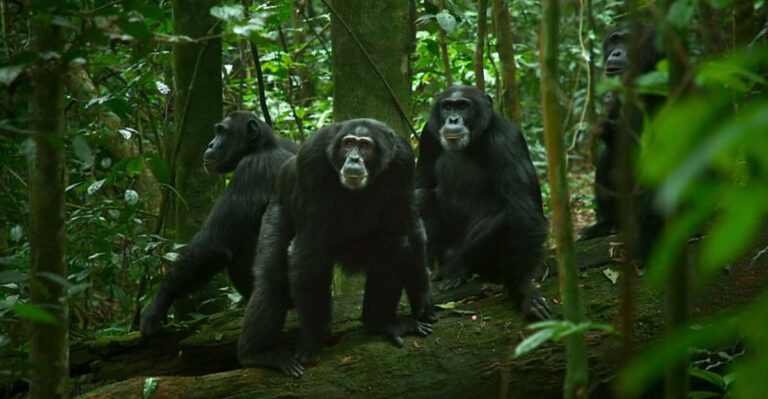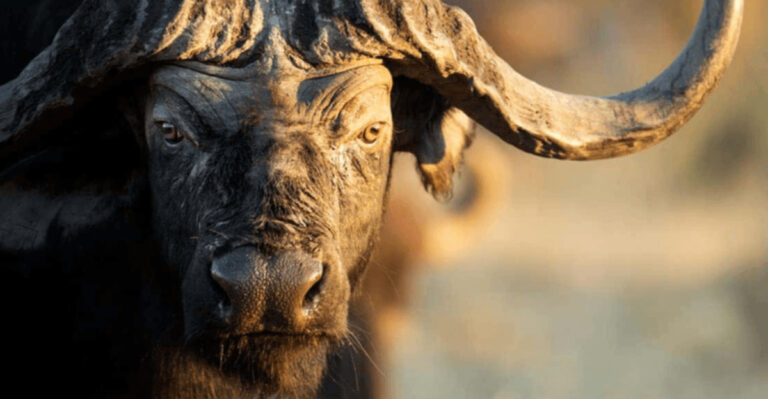Scientists Reveal Why Saber-Toothed Tigers Weren’t Really Tigers
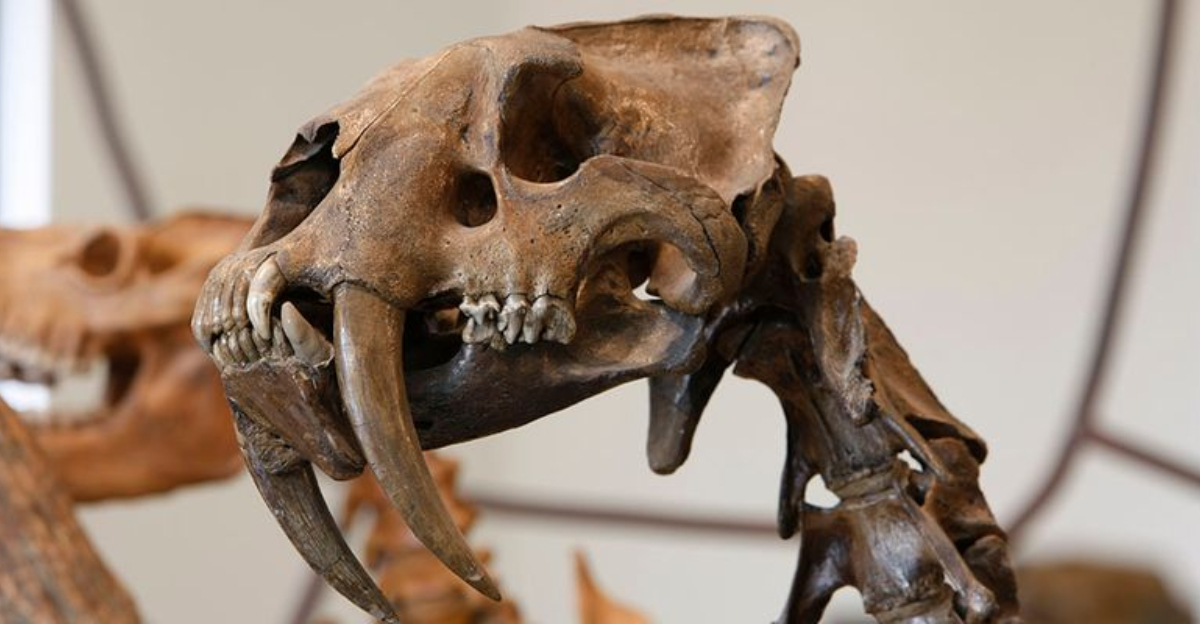
When you hear ‘saber-toothed tiger,’ you probably picture a striped cat with enormous fangs. But scientists have discovered these Ice Age predators weren’t tigers at all!
These fascinating extinct animals, properly called Smilodons, were completely different creatures that happened to get stuck with a misleading nickname.
1. Completely Different Family Tree
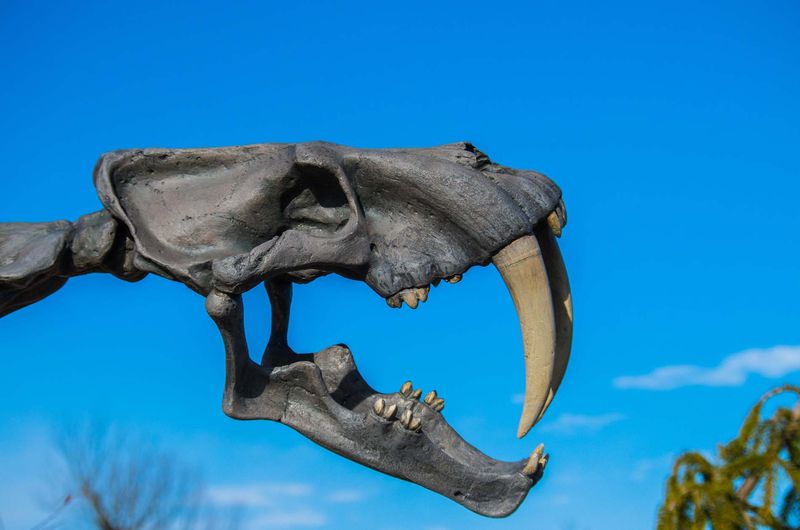
Smilodon belongs to an extinct subfamily called Machairodontinae, while modern tigers are part of Pantherinae. These branches split approximately 20 million years ago!
Think of them as distant cousins rather than close relatives. While they both hunted large prey and had powerful builds, their evolutionary paths diverged long before humans walked the Earth.
2. Built Like Wrestlers, Not Runners
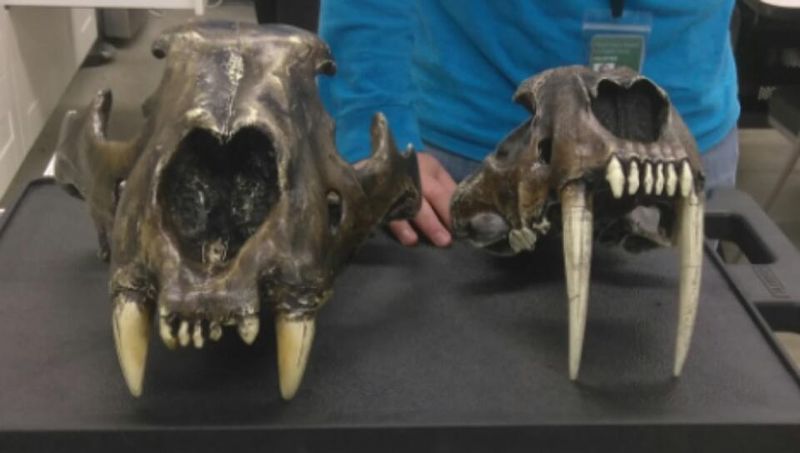
Modern tigers are sleek racing machines with long, powerful limbs for chasing prey. Smilodons had stockier, shorter legs and incredibly muscular shoulders and necks.
Their body resembled a lion on steroids more than a tiger. Fossil evidence shows they were powerhouses built for grappling large animals to the ground, not for pursuing them across open plains.
3. Those Famous Teeth Were Unique
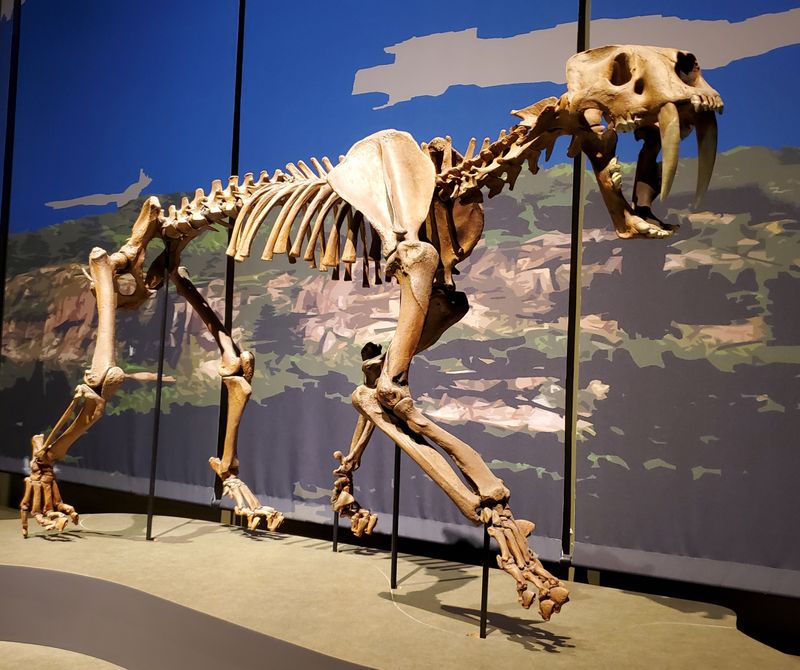
The signature canines of Smilodon could reach a whopping 7 inches long! Modern tigers have impressive teeth, but nothing like these specialized daggers.
Surprisingly fragile for their size, these teeth weren’t designed for crunching bones. Scientists believe they were precision instruments for slicing through soft tissue, delivering deadly wounds to large prey animals.
4. American Origins, Not Asian
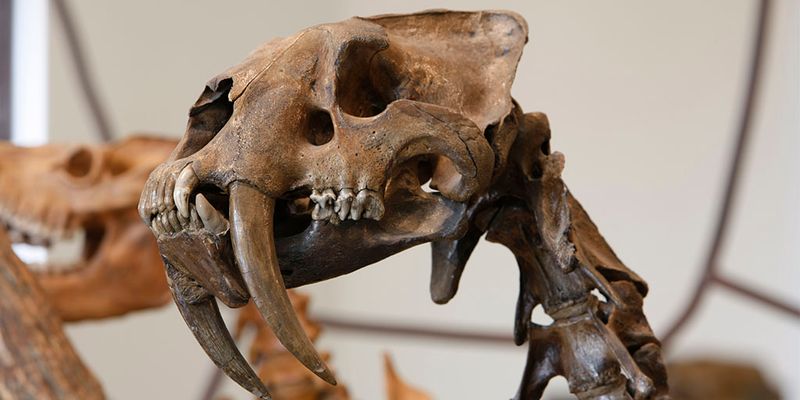
Tigers evolved in Asia and still live there today. Saber-toothed cats roamed across the Americas, from Alaska to Peru!
Fossils show they thrived in diverse habitats across two continents. La Brea Tar Pits in Los Angeles holds thousands of Smilodon remains, making it one of the best-studied prehistoric predators from the Americas.
5. Hunting Style Was Totally Different
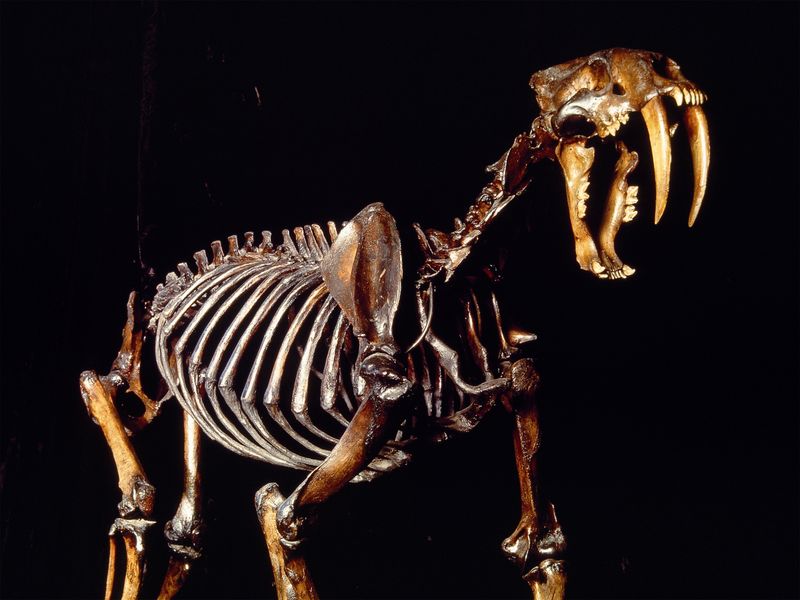
Forget the stealthy stalk-and-sprint approach of tigers. Smilodon likely ambushed prey at close range, using its powerful forelimbs to wrestle animals to the ground.
Once the prey was immobilized, those famous teeth delivered a precise killing bite to the throat or belly. This hunting method required tremendous upper body strength rather than the speed and agility tigers rely on.
6. Mystery Coat Without Stripes
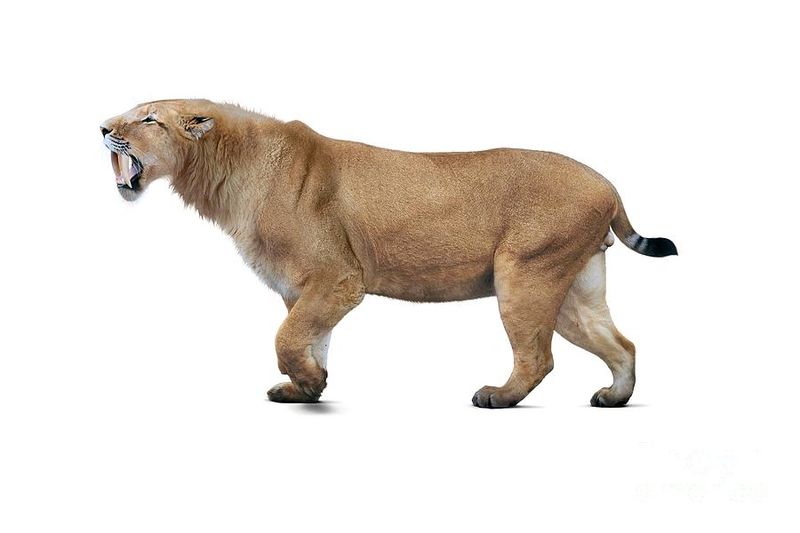
Those striped saber-tooths in movies? Pure imagination! We have zero evidence about their fur patterns because soft tissues rarely fossilize.
Based on modern predator adaptations, scientists speculate they might have had solid tawny coats like lions, or perhaps mottled patterns for camouflage. Their appearance remains one of paleontology’s enduring mysteries.
7. Specialized Megafauna Hunters
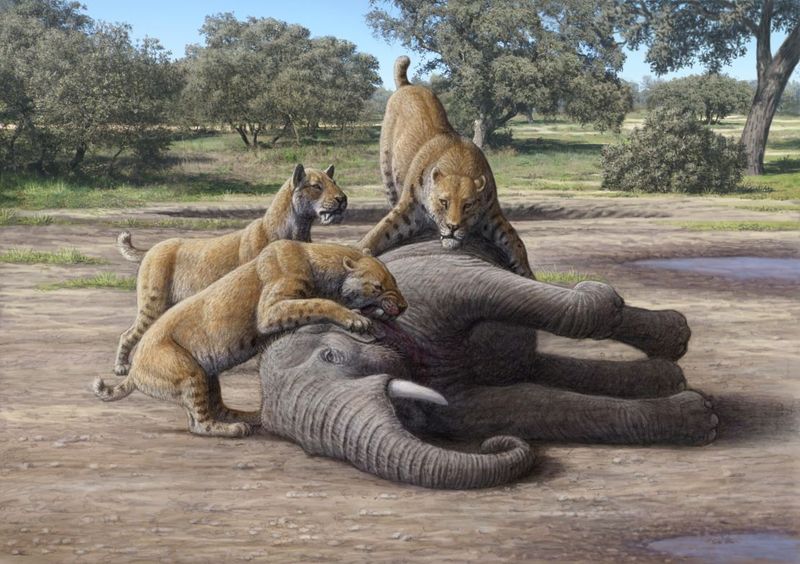
While tigers hunt deer, wild pigs, and occasionally larger animals, Smilodons specialized in taking down enormous Ice Age beasts.
Mastodons, giant ground sloths, and prehistoric bison were all on the menu! Their entire body evolved specifically for subduing animals many times their size. Fossil evidence shows they even tackled young mammoths when hunting in groups.
8. Social Lives Remain Controversial
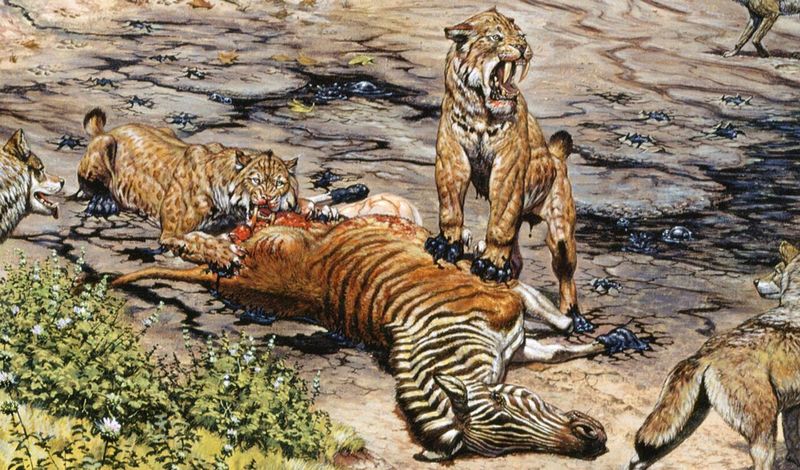
Modern tigers are solitary hunters, but Smilodons might have lived in prides like lions! The debate continues among paleontologists.
Large numbers of fossils found together at La Brea suggest possible group behavior. Some scientists theorize they shared kills and cared for injured pack members, based on healed injuries found in fossils that would have prevented solo hunting.
9. Jaw Mechanics Worked Differently
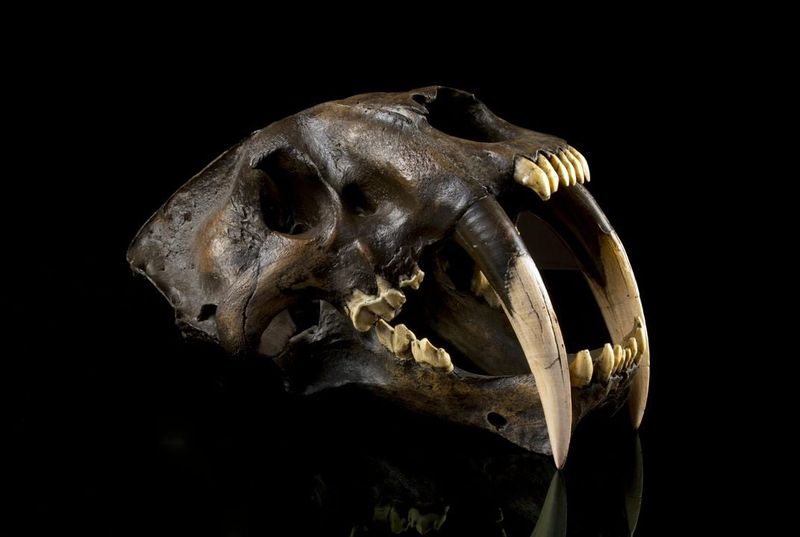
Tigers can open their jaws about 65 degrees. Smilodons could gape at a shocking 120 degrees – nearly twice as wide!
This extreme adaptation allowed them to position those long fangs for maximum effectiveness. Their bite force was actually weaker than modern big cats, but their specialized anatomy created a deadly precision weapon unlike anything alive today.
10. Survived Multiple Climate Changes
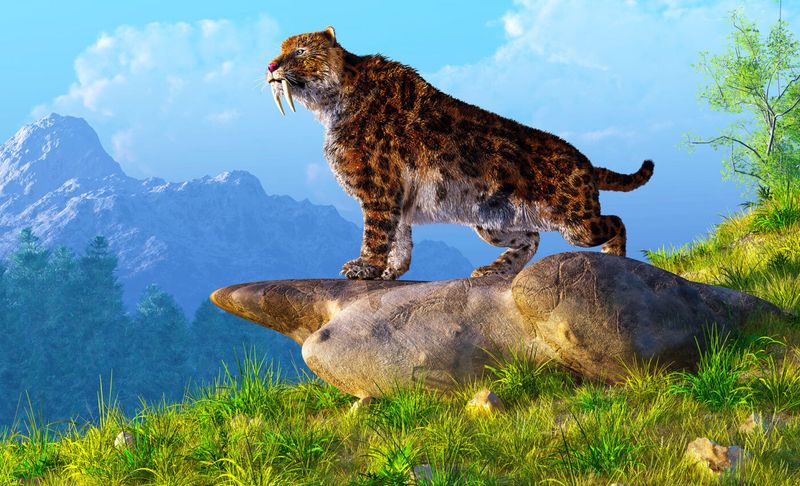
Saber-toothed cats thrived through numerous ice ages and warming periods across millions of years. Modern tigers evolved much more recently and have adapted to fewer climate shifts.
Various saber-tooth species existed for approximately 42 million years before their final extinction around 10,000 years ago. Their adaptability across changing landscapes makes their eventual disappearance even more mysterious.
11. Shorter Tails For Balance
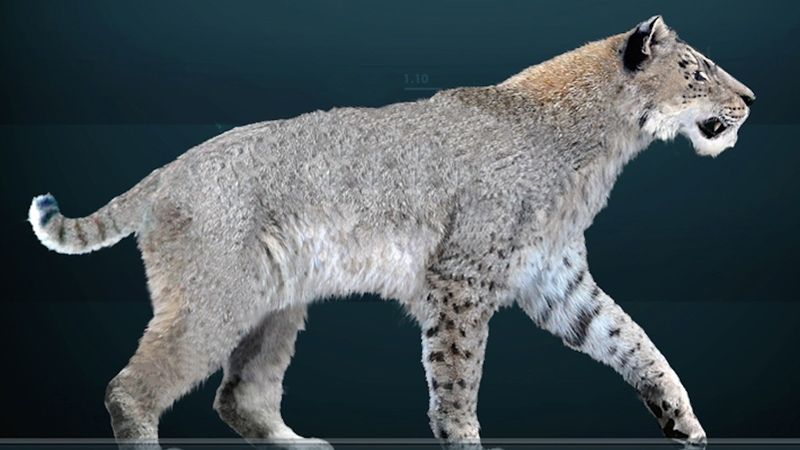
Unlike the long, expressive tails of tigers, Smilodons had relatively short, bobcat-like tails. This anatomical difference reflects their distinct hunting strategies.
Tigers use their tails for balance during high-speed chases and sharp turns. Smilodons, as ambush predators who wrestled rather than chased prey, didn’t need this adaptation. Their stockier build was stabilized by a different center of gravity.
12. Named By Accident, Not Science
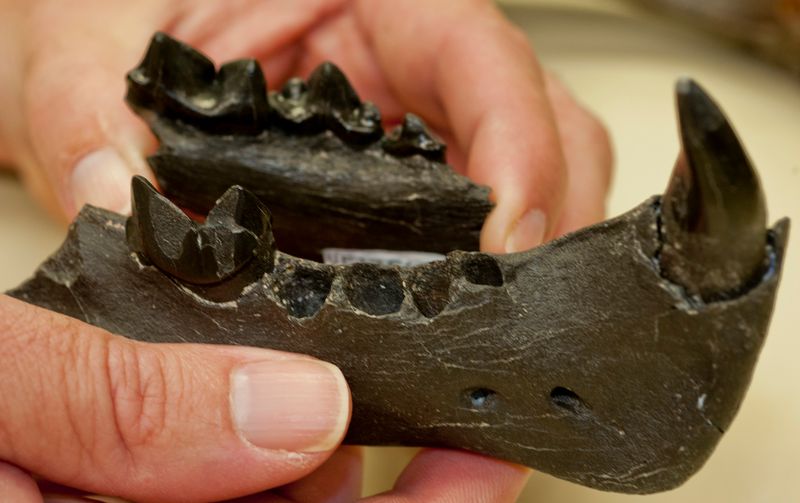
The misleading nickname “saber-toothed tiger” stuck because early fossil discoverers used familiar animals as reference points. Scientists today prefer “saber-toothed cat” or “Smilodon.”
This naming confusion happens frequently in paleontology. Just like sea cows aren’t cows and flying lizards weren’t dinosaurs, these magnificent prehistoric predators deserve recognition as their own unique evolutionary marvel.


